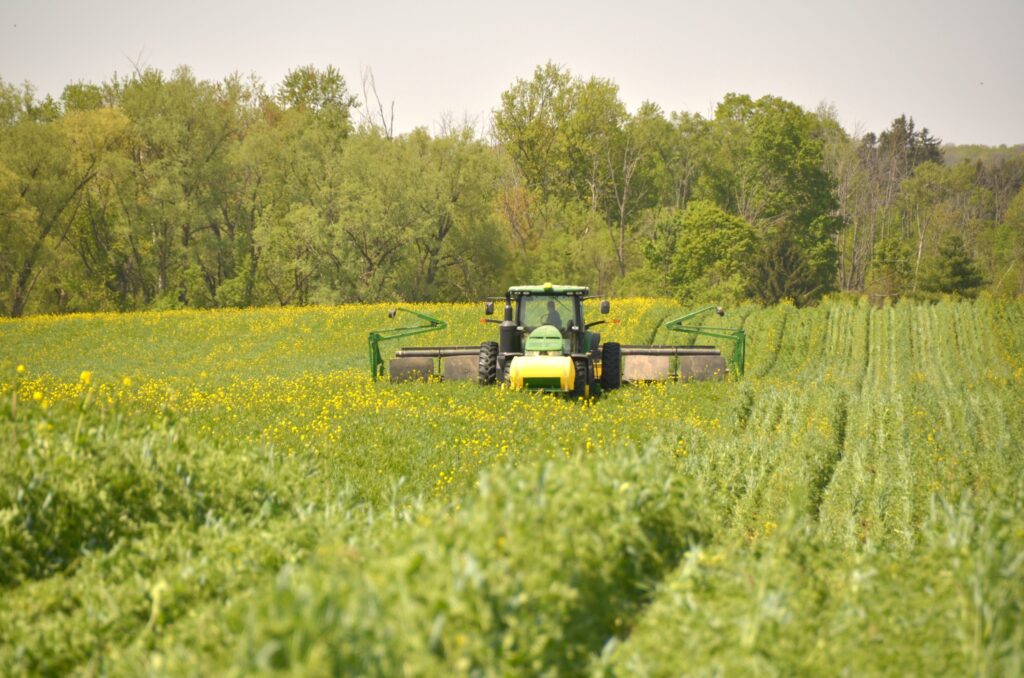Planting corn directly into a living cover crop before it is killed by herbicide or tillage is not something that would have been considered 30 years ago. However, with advances in planter technology, herbicide options, and a greater awareness of cover crop benefits to soil health, more growers are doing it. According to the 2022-2023 US National Cover Crop Survey, the practice of “planting green” has grown in popularity, with a 22% increase compared to 2016-2017. Over 38% of respondents in 2022-2023 who grew a cover crop before corn reported terminating it at or shortly after seeding. In Ontario, while planting green for corn is not mainstream, it has also increased in popularity.
Most research trials have focused on the impact of termination timing of a cereal rye cover crop ahead of corn planting. In Ontario, corn is often planted following winter wheat, after which several different overwintering species, such as crimson clover, hairy vetch, and brassicas, can be seeded. The impact of planting corn green into such mixtures is not well known.
For those looking over the fence at these systems, the key question is: does it work? To help provide an answer, I followed five Ontario corn fields during the 2023 season that were planted green into cover crop mixtures. The objective was to identify common challenges, highlight differences across soil types, and define key elements to success.
Average corn yield across the five fields was 193.7 bu/ac, which surpassed county average values by nearly 30 bu/ac. The main learnings were:
- Target modest spring cover crop growth to reduce planting challenges.
- Modify planter with appropriate downforce and closing wheels.
- Apply a higher-than-standard upfront nitrogen rate.
- And match burndown herbicides to control all cover crop species and avoid escapes.
Read on to learn more.
Continued at the link above…


